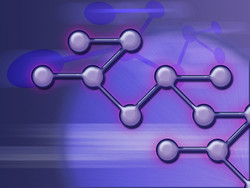Light-driven molecular motor dynamics
Molecular motors are artificial nanomachines that rotate when provided with chemical or light energy. Upon energy input the molecule undergoes a conformational change that leads to unidirectional rotation of one part of the molecule (rotor) with respect to another. The EU-funded project MOLMOTDYN (Understanding the dynamics behind the photoisomerization of light-driven molecular rotary motors and switches) studied the dynamics of light-driven molecular rotary motors. In particular, researchers wanted to increase the power output by combining several molecular motor units within a single molecular device. The field of building artificial molecular machines is still in its infancy. To design improved molecular devices for specific functions, scientists need to have a thorough understanding of how the chemical reactions work. MOLMOTDYN used computational tools that simulated atomic movements to model the mechanics of light-driven molecular devices. Using this information, researchers developed models for two new classes of light-driven molecular devices with improved quantum efficiency. Their main innovation was to replace an inefficient type of motion typical of earlier models by pure rotation around an axis. They also provided a means to screen potential molecules that would provide axial rotation within molecular light-driven devices. Researchers have already begun to build molecular motors based on their theoretical models and have confirmed that they work in preliminary lab tests. They are also designing ways to anchor the motor units on suitable substrates such as surfaces of conducting or insulating materials, or biopolymer substrates. MOLMOTDYN's breakthroughs will enable chemists to design light-driven molecular motors and switches suitable for a variety of applications. In addition, the computational tools developed during this project extend the capability of researchers to address emerging concepts in quantum chemistry.







